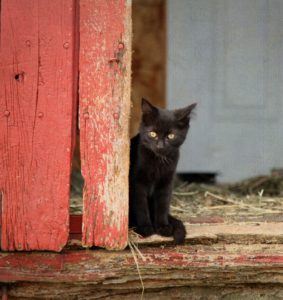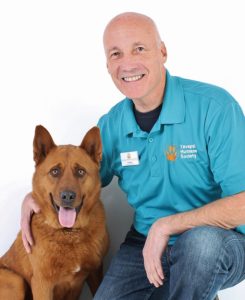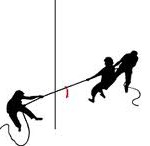 Insanity, according to Albert Einstein, is “doing the same thing over and over again, expecting different results.” Many communities address their feral cat problem over and over again with two basic methodologies - only to be disappointed by the consequences of their efforts.
Insanity, according to Albert Einstein, is “doing the same thing over and over again, expecting different results.” Many communities address their feral cat problem over and over again with two basic methodologies - only to be disappointed by the consequences of their efforts.
Feral cats are cats who have reverted to a wild state – born from tame cats that owners abandon or allow to run loose. These cats mate with other free-roaming cats, and their offspring, raised without human compassion, are wild, or feral. They grow up and breed with other feral and free-roaming cats and the cat population increases exponentially. Feral cats are considered a public nuisance by some and a public health concern by others. They needn’t be either.
The two methodologies employed by most communities are Do Nothing and Eradication. Decades of applying these methodologies has proven they don’t work – and there are very real biological reasons why.
It is easy to understand why doing nothing has little impact on the problem, but it is not as easy to understand why eradication does not work.
Feral cats typically live in colonies of 6 to 20 cats. When individuals try to catch cats for extermination, this heightens the biological stress of the colony, triggering a survival mechanism that causes the cats to over-breed and over-produce. Consequently, instead of birthing one litter per year with two or three kittens, a stressed female will produce two or three litters with 6 to 9 kittens each.
Even in the unlikely event that a person could catch and remove all the feral cats in a neighborhood, a phenomenon known as “the vacuum effect” would result. The removed colony had kept surrounding colonies at bay, but once removed, all deterrents evaporate and the surrounding cats enter the new territory to over-breed. The vacated neighborhood is quickly overrun with feral cats fighting for mates, caterwauling, and spraying for territory. Extermination only exacerbates the problem and actually produces worse results than doing nothing at all.
However, there is a third methodology that is increasingly practiced in communities across the United States and around the world with amazing results. It is called Trap/Neuter/Return, or TNR.
With TNR, all the feral cats in a neighborhood are trapped, sterilized, and returned to the area where they originated – under the care of a colony manager. The colony manager is a trained volunteer in the neighborhood willing to feed, water, and care for the colony.

TNR prevents the vacuum effect. Altered cats display none of the troubling behaviors of intact cats. Feral cats provide free rodent abatement, a service many neighborhoods unknowingly rely on. Since feral cats only live three to five years, the problem literally solves itself through attrition, provided TNR is implemented community-wide.
TNR also solves public nuisance complaints. There is an adage that says “you can’t herd cats.” In fact, you can herd neutered cats because they tend to hang around the food bowl. No longer having the urge to breed and prey, they follow the food bowl wherever the colony manager takes it. Feral cats can be trained to congregate in areas out of the way of the public.
TNR is a non-lethal, humane and cost-effective solution. Understanding these facts, municipal animal shelters ought to enact a moratorium on accepting feral cats until a comprehensive community-wide feral cat program can be initiated.
TNR empowers citizens to solve this troublesome problem once and for all. Feral cats are trapped, neutered, vaccinated, health-checked by a veterinarian and returned to their neighborhood where their population is stabilized and reduced through attrition.
If you would like more information on TNR or if you need help to develop this program in your community, please contact me.

 Six years ago this month I joined the Yavapai Humane Society (YHS) team as executive director. When I joined the YHS team I found an organization operating with some challenges — from a notable deficit, high employee turnover, and low morale.
Six years ago this month I joined the Yavapai Humane Society (YHS) team as executive director. When I joined the YHS team I found an organization operating with some challenges — from a notable deficit, high employee turnover, and low morale. The month of July is chock-full of patriotic festivities that include outdoor celebrations, picnics, barbecues, and of course, fireworks. Before you pack up for the lake or outdoor arena, stadium or even your own front yard to enjoy the pyrotechnic delights of the holiday, be aware of your pets’ needs and fears.
The month of July is chock-full of patriotic festivities that include outdoor celebrations, picnics, barbecues, and of course, fireworks. Before you pack up for the lake or outdoor arena, stadium or even your own front yard to enjoy the pyrotechnic delights of the holiday, be aware of your pets’ needs and fears. Every year every community decides to wreak massive mayhem among our companion animals. If you’re a pet owner, you know I’m talking about the Fourth of July. Fireworks terrify pets.
Every year every community decides to wreak massive mayhem among our companion animals. If you’re a pet owner, you know I’m talking about the Fourth of July. Fireworks terrify pets. Your pet has a deadly enemy that comes in the form of several species of grassy weeds that grow rapidly during the winter/spring rains. When these grasses mature a seed forms at the top of the stalk resembling a fox tail.
Your pet has a deadly enemy that comes in the form of several species of grassy weeds that grow rapidly during the winter/spring rains. When these grasses mature a seed forms at the top of the stalk resembling a fox tail. Foxtail seeds are relatively small, so detecting them after they enter a dog’s body can be difficult. Veterinarians usually rely on telltale symptoms such as head-shaking, paw licking, swellings on the body, or sudden and continuous sneezing. Foxtails in the ears, nose and eyes are serious and can ultimately be life-threatening if not treated promptly.
Foxtail seeds are relatively small, so detecting them after they enter a dog’s body can be difficult. Veterinarians usually rely on telltale symptoms such as head-shaking, paw licking, swellings on the body, or sudden and continuous sneezing. Foxtails in the ears, nose and eyes are serious and can ultimately be life-threatening if not treated promptly. These are challenging times for government officials. In many communities the care of lost and homeless animals can be complicated by a host of competing priorities. When evaluating conflicting priorities it’s easy to look to the bottom line. When that happens, questions of compassion can be overlooked.
These are challenging times for government officials. In many communities the care of lost and homeless animals can be complicated by a host of competing priorities. When evaluating conflicting priorities it’s easy to look to the bottom line. When that happens, questions of compassion can be overlooked. Part of my holistic approach to healthy, humane animal shelter management includes implementation of innovative
Part of my holistic approach to healthy, humane animal shelter management includes implementation of innovative